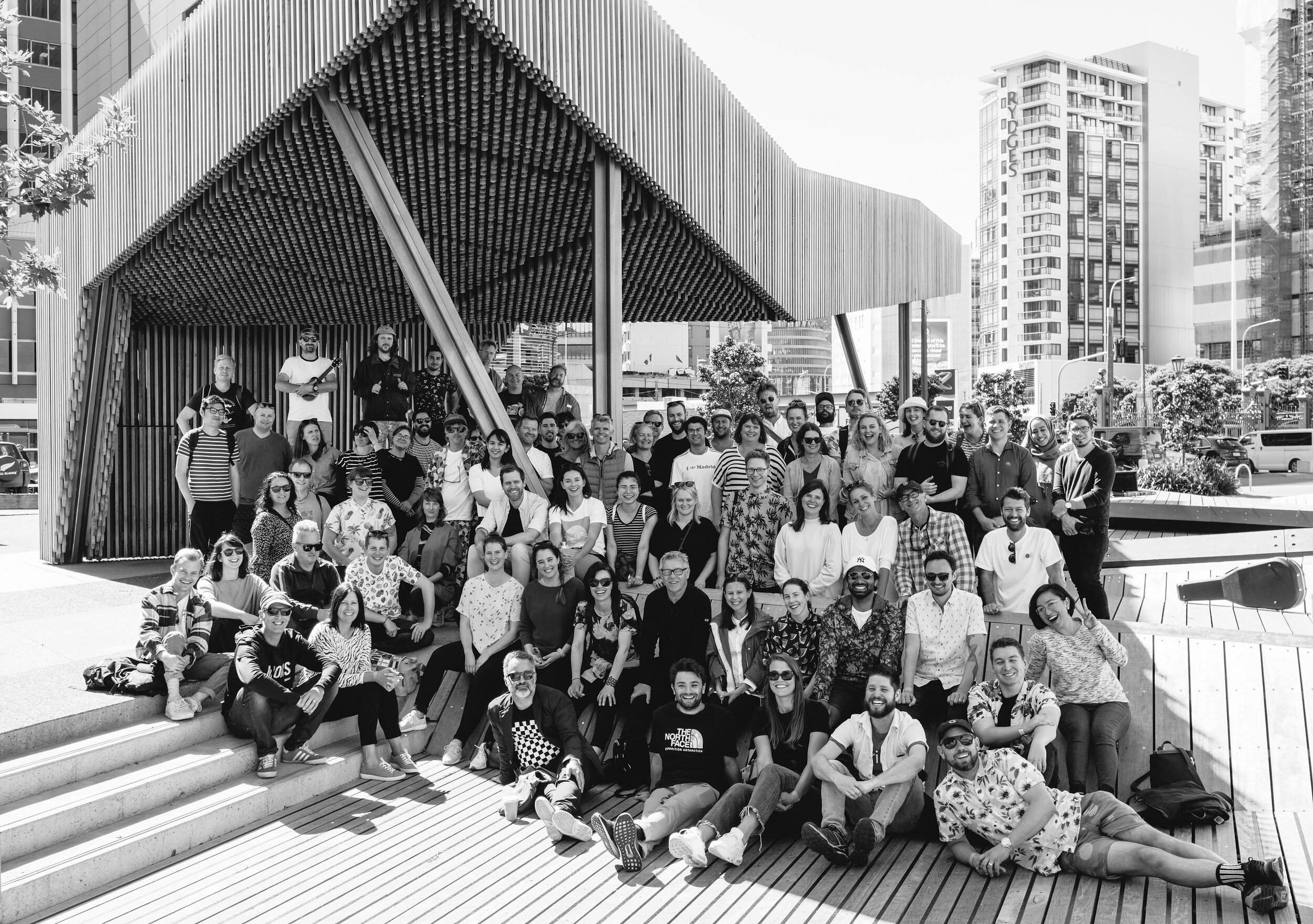Diversity and Inclusion
By Ralph Johns, CEO Isthmus
The moral and business case for diversity and inclusion is stronger than ever, with research proving the positive effect on employee wellbeing, creativity and innovation; all these things lead to better design. Five years ago Isthmus recognised that we needed do more — women made up over 40% of our team and were well represented in terms of design leadership, but there were no women on the Board or the management team.
Since then our studio doubled in size. Today we have 90 staff — urban designers, architects, accountants, graphic designers, IT experts, landscape architects, project managers and artists — in three studios, all working together as one team. We have more women in leadership positions, are much closer to achieving gender balance and we are more diverse in terms of age, ethnicity, relationship status, religion and sexuality. In addition, we better support neurodiversity.
The Isthmus team.
In 2018 Isthmus became a founding partner of The Diversity Agenda Diversity Agenda — established to champion gender equity, it has since widened its remit to advocate for inclusion of the rainbow community as well as Māori & Pasifika. We have signed up to the Diversity Agenda Accord which commits the personal responsibility of CEs and business owners to be held publicly accountable for achieving diversity. The Accord’s three tenets are organised around leadership, inclusivity and equity.
At the recent Accord Summit leaders from Aotearoa's most progressive engineering and architecture firms shared initiatives and practices to help cultivate truly diverse and inclusive work environments. It was acknowledged that while progress towards greater diversity is undoubtably being made, the pace of change is slow. Challenges were set.
At Isthmus we have put a range of initiatives in place to meet these challenges. Firstly, we undertake a diversity survey to give us more information and help us to set targets that inform hiring, remuneration reviews, policies and practices. We continue to track our gender pay equity gap, and will look to close it in our next bi-annual salary review.
We have a well-established women-in-leadership group currently focusing on improving our support for parents before, during and after parental leave, and helping female graduates find a strong career footing. We have developed Te Kāpehu, our project impact compass, to include consideration of the makeup of project teams — we know a diverse team makes for diverse thought and therefore a higher quality design outcome. We now have open license to question “why are there only guys around this table?”.
We encourage open and honest dialogue through our organisation-wide support structure. Our whānau leaders support our people to be the best they can be, and are equipped with the skills to navigate difficult conversations about wellbeing and mental health. We provide everyone with an extra five days of Wellbeing Leave for staff to proactively look after themselves and their families. This year’s change to the Holidays Act acknowledges that five days sick leave is not enough, and increases it to ten days.
We have updated our Bullying and Harassment policy — we do not tolerate a lack of respect for people. Remote and flexible working are part of studio life now, and we’re always open to requests to reduce hours on a temporary or permanent basis to support better work-life balance.
We embrace mātauranga māori as a core part of our strategy, honoring te Tiriti and ensuring Māori voices are at the forefront of decision making. We recently added a second independent director to our Board who has the mana and skills to help us achieve this. We partner with Auckland Council and Unitec in a Māori and Pasifika internship programme, He Muanga He Tangata.
We have establised a champion-network group, He Pātaka Mauri, to gradually weave kaupapa māori into our design philosphy and practice. We have celebrated Matariki with a dinner for our employees and their whānau and an extra day off since 2013 — we’re thrilled that from next year everyone in Aotearoa will be able to enjoy a Matariki public holiday.
We have opened up ownership to senior level (as well as associates and principals) and now have twice as many shareholders as we did last year, bringing a lot more diversity to ownership. However, less than 30% of our shareholders are women and the proportion of the business they own is only around 10%. It’s going to take longer for ownership to balance equity of ownership, but we are breaking down the boundaries and creating succession plans now to allow this to evolve over time.
We are committed to closing the diversity gaps that exist and challenging unconscious bias. But we still have much mahi to do as a studio and as an industry before we can say that our people truly represent the diversity of the communities that we design with and for.

